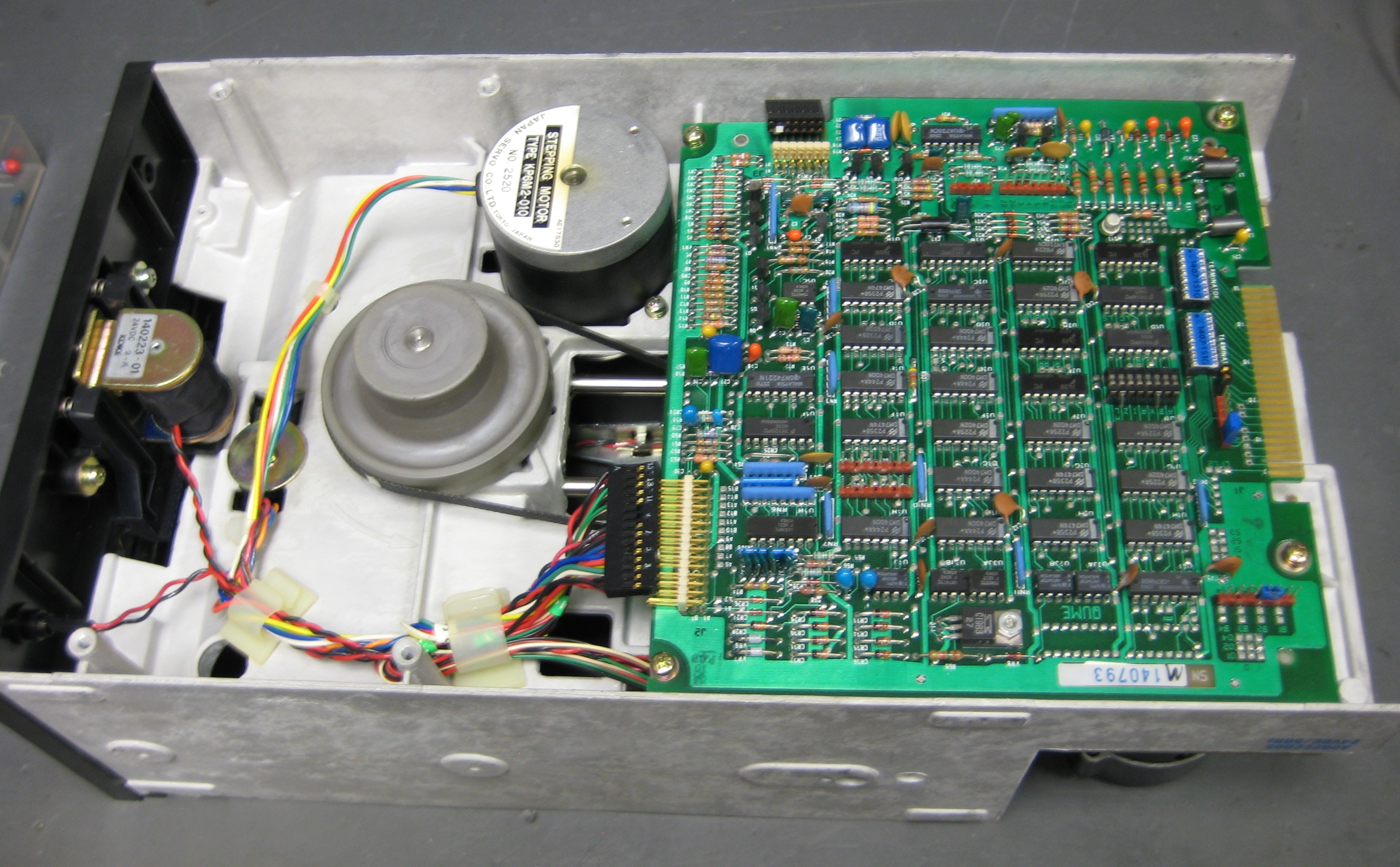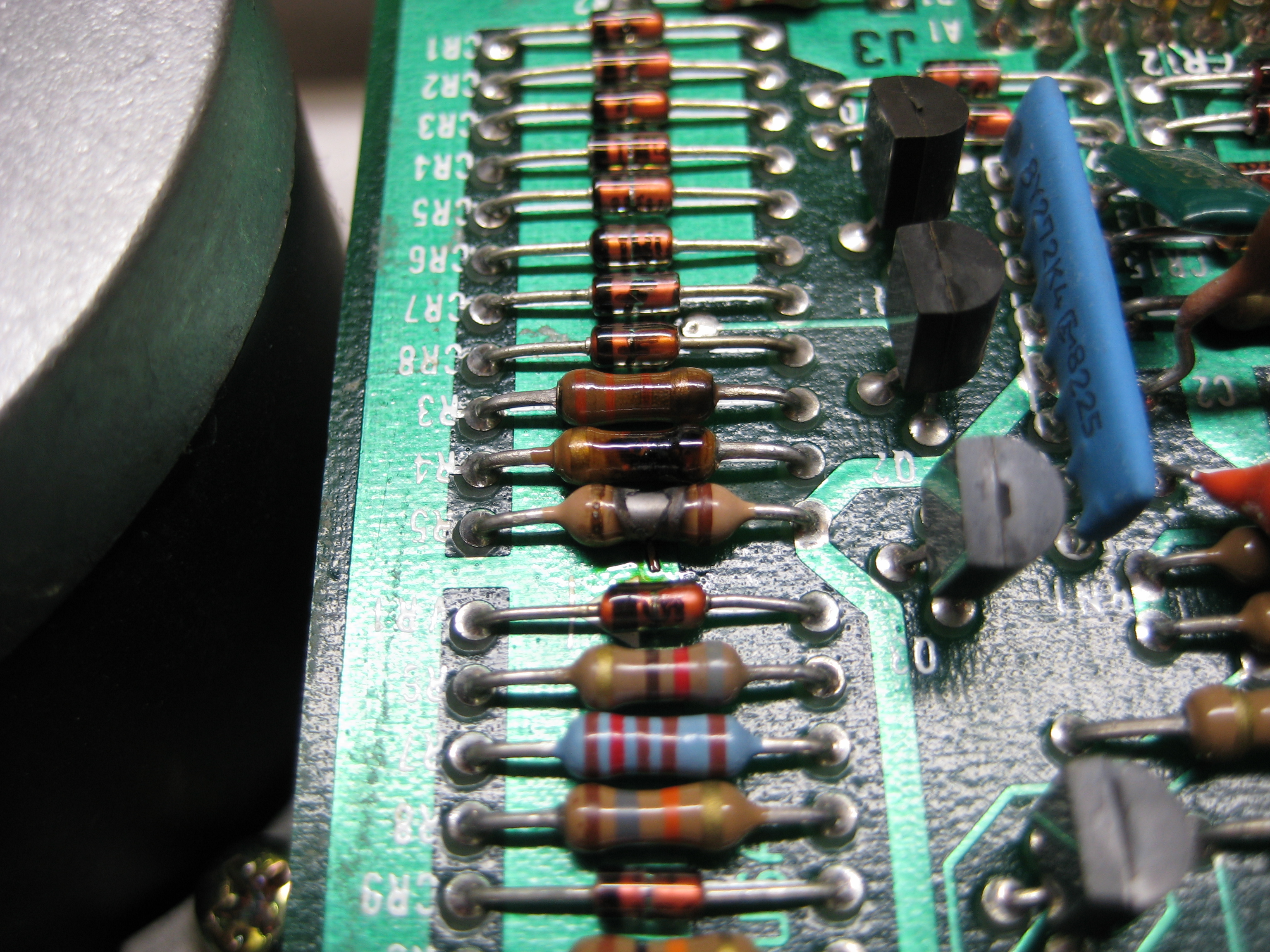Qume 842 (DataTrak 8) 8-inch Flexible Disk Drive Support
 This is Qume’s 8-inch Double-sided, Double-density flexible disk drive. It is available with an AC drive motor or a 24 VDC drive motor. It has a door locking mechanism that would prevent the user from removing the disk. It has a 3 ms track-to-track step rate. This is Qume’s 8-inch Double-sided, Double-density flexible disk drive. It is available with an AC drive motor or a 24 VDC drive motor. It has a door locking mechanism that would prevent the user from removing the disk. It has a 3 ms track-to-track step rate.
We put a lot of time
into organizing the information here, especially the DYI resources. If the information here was helpful to you, please consider making a donation to help us continue making content like this available.
(by Robert Weatherford, 20-Jan-2021).
As with all things old (these drives were made in the early 1980s), components fail and render it inoperable. We have a couple of these drives sitting idle for years on end and only once in a decade or so bring it back into service. It is connected to an 80486 computer with an Adaptec AHA-1522A SCSI/Floppy controller. Astonishingly, it can read 5¼" and 8" FM and MFM diskettes. Probably write, too, but I have not tried that so far. I ran across a pile of 8" floppy disks to read into image files. The last time I did this was 2008, 13 years ago. I powered up the drives and immediately recognized the unmistakably smell of a burning resistor. Being the optimistic type (or perhaps it’s laziness), I was hoping it was something non-fatal in the power supply. I checked the supplies (and adjusted them while I was at it) and re-introduced the drives, and everything seemed to be OK.
Well, it wasn’t. To make a long story a bit shorter, I decided to give the drive’s circuit board a good visual inspection. To my glee, I found a burned out resistor, R5. It was charred beyond the ability to read what it was supposed to be, so I downloaded the Qume 842 (DataTrak 8) Service Manual and discovered that R5 is part of a power rail filter bypassed by C3. C3 is a 1µF 35V solid tantalum capacitor. I’ve seen this exact kind of failure before. The tantalum cap fails shorted. It’s a good thing R3 was the sacrificial component, or else C3 probably would have either exploded or caught fire. To validate my hypothesis, I measured the resistance across C3 and it was almost a dead short. I just happen to have a NOS 1/35 solid tantalum and a 10Ω ¼W CC resistor.
Now, here’s the weird part − the second drive has the exact same failure! What are the odds in that? What’s even stranger is that the C3 caps are a different color between the drives, making it unlikely to be a manufacturing lot defect. They both measure to be a dead short. While I was a production technician at IMSAI in 1978, I would run across an occasional 33/25 dipped tantalum failure (most of them were due to being inserted with reversed polarity during board stuffing). They can be quite spectacular flamethrowers or firecrackers. This is the first extended tantalum failure I have seen so far, despite reading many stories on the Internet about how common this is. I have replaced probably a thousand failed aluminum electrolytic caps over the years, but never a tantalum. I still prefer to design with tantalums to this day, but I’ll probably have this failure in the back of my mind from now on.
 Upon visual inspection of the second PCB, I noticed a discolored R51 (470Ω) and a failed C23 (another 1/35). C23 similar to C3, but without a current-limiting resistor (“fuse”). Its head had been blown off, and probably did catch fire for a second. R51 is in a similar circuit, but its bypass capacitor checks out. The discoloration on R51 was probably caused by the C23 fire. Upon visual inspection of the second PCB, I noticed a discolored R51 (470Ω) and a failed C23 (another 1/35). C23 similar to C3, but without a current-limiting resistor (“fuse”). Its head had been blown off, and probably did catch fire for a second. R51 is in a similar circuit, but its bypass capacitor checks out. The discoloration on R51 was probably caused by the C23 fire.
After these discoveries, I checked all the ST caps with the ohmmeter. The three ST caps I had identified by inspection were the only current failures. If this was a customer drive, I would recommend replacing all the 1/35 STs. I’m not going to because I only have 3 in stock and don’t want to wait. I really would like to replace the good C23 because of the hazard.
After making the repairs and powering back up, exactly the same thing happened! Can you believe it? I can’t. In a way it makes sense because I replaced the ST caps with ones just as old. Now I’m going to replace all the 1/35 and 4.7/16 caps with new ones. It only happened because I thought that I should replace them all anyway. Needless to say, I’m going to test and throw away most of the ST caps I have from the late 1970s. By the way, I did, and over half of them failed when about 60% of the rated voltage was applied. Now I realize that Kemet and other manufacturers recommend derating the working voltage 50%. This is the problem with being in the industry for so long. You learn all the best practices back in the day and no one tells you that they changed 25 years later! 😲
While I was at it, I replaced the six rubber feet on the bottom of the cabinet which had begun decomposing and oozed black tar on my workbench.
The repair was completed on 27-Jan-2021 − Drive A (SN M140802) and Drive B (SN M140793) had C1, C3, C20, C21, C23, C25, C30, C36, C48, and R5 replaced.
If the information here was helpful to you, please consider making a donation to help us continue making content like this available.
Manuals
|